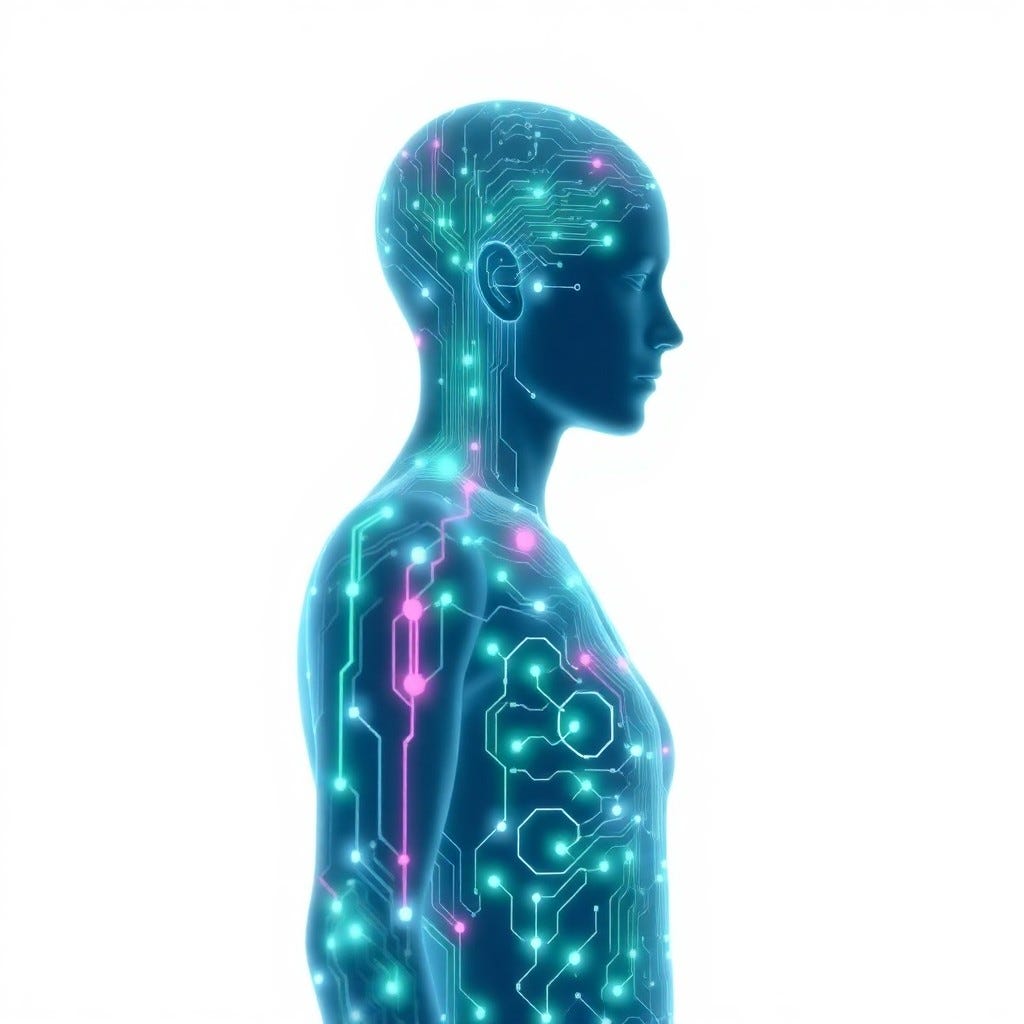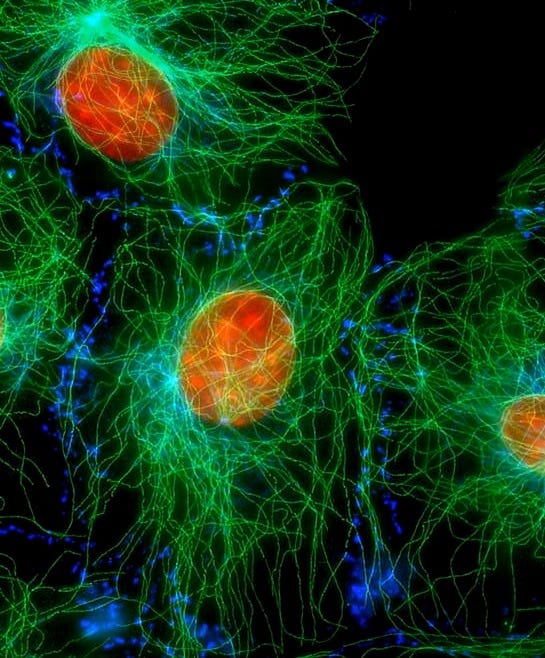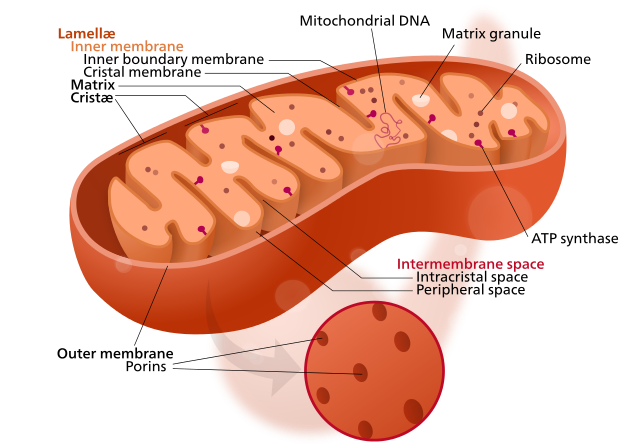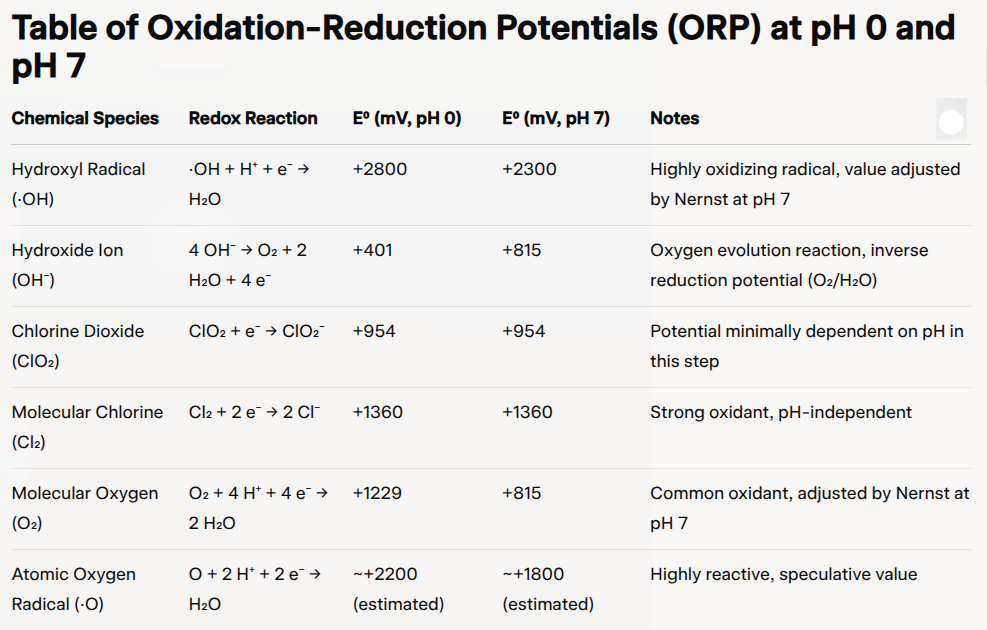Introduction
The human body is an intricate electrical circuit, where precise voltage gradients orchestrate every biochemical process, from ATP synthesis to neuronal signaling. Electromolecular homeostasis—the dynamic equilibrium of electrical charges and redox potential at the molecular level—forms the foundation of cellular health. This paradigm, emphasizes three critical voltages: pH voltage, redox voltage, and membrane voltage. These voltages drive chemical reactions, maintain cellular integrity, and regulate bioenergetics. Our research with Chlorine Dioxide Solution (CDS), documented on Dioxipedia.com, demonstrates its ability to restore these voltages, offering a transformative approach to treating chronic diseases, infections, and even neurological conditions.
The medical community’s limited understanding of biophysics has led to a reliance on biochemical interventions that often ignore these electrical principles, contributing to iatrogenic harm—a leading cause of death globally. This article provides a comprehensive, academically rigorous yet accessible exploration of electromolecular homeostasis, clarifies the distinctions between pH, redox, and membrane voltages, and presents verified evidence from credible sources . It also highlights educational resources at kalckerinstitute.com, urging healthcare professionals to embrace learning more about biophysics to reduce patient harm and revolutionize medicine.
The Body as an Electrical Circuit
Every cell in the body operates as a node in an electrical network, where voltage—the potential difference driving electron flow—governs biochemical reactions. This is not a metaphor but a measurable reality. For example, the heart generates an electromagnetic field (detectable via electrocardiograms) that synchronizes red blood cell (RBC) function, enabling oxygen delivery. Neurons rely on voltage-gated ion channels to propagate action potentials, while mitochondria use voltage gradients to produce ATP. Disruptions in these voltages, whether from oxidative stress, inflammation, or misguided pharmaceutical interventions, lead to cellular dysfunction and disease.
My work, as detailed on Dioxipedia.com, underscores that “voltage is life.” Without the right voltage in the right place, metabolic pathways falter, ion transport fails, and signaling cascades collapse. The medical community’s ignorance of these principles contributes to iatrogenic mortality, estimated at over 250,000 deaths annually in the US alone (Makary & Daniel, 2016), surpassing deaths from car accidents. This crisis demands a paradigm shift toward electromolecular medicine.
Dissecting Cellular Voltages
To understand electromolecular homeostasis, we must distinguish between three key voltages: pH voltage, redox voltage, and membrane voltage. Each plays a unique role in cellular function, yet their interplay ensures the body’s electrical coherence. This is often poorly understood.
pH Voltage: The Proton Gradient
pH voltage reflects the electrical potential arising from the concentration of hydrogen ions (H⁺), expressed as pH = -log[H⁺]. The pH scale (0–14) quantifies acidity or alkalinity, but its electrical significance is captured by the Nernst equation:
where ( R ) is the gas constant (8.314 J/mol·K), ( T ) is temperature (310 K for body temperature), and ( F ) is Faraday’s constant (96,485 C/mol). At physiological pH (7.4), a pH difference of 1 unit across a membrane corresponds to approximately -59 mV at 37°C.
Protons act as charge carriers, influencing enzyme activity, protein folding, and membrane transport. For example, ATP synthase requires a pH gradient (ΔpH ~1 unit) across the mitochondrial membrane to drive ATP production. Acidosis (pH < 7.35) or alkalosis (pH > 7.45) disrupts these processes, impairing glycolysis and the citric acid cycle. A 2023 study noted that acidosis in hypoxic tissues reduces enzymatic efficiency by 20–30%, highlighting pH voltage’s critical role.
Redox Voltage: The Electron Flow
Redox voltage, or oxidation-reduction potential (ORP), measures a system’s tendency to gain or lose electrons, expressed in millivolts (mV). It reflects the balance between oxidants (e.g., ROS) and reductants (e.g., NADH). Cellular redox voltage typically ranges from -200 mV (reducing, in mitochondria) to +100 mV (oxidizing, in extracellular fluids). The mitochondrial electron transport chain (ETC) relies on redox voltage to transfer electrons from NADH (-320 mV) and FADH₂ (-220 mV) to oxygen (+820 mV), generating a proton gradient.
A hyperoxidative state (>+100 mV) produces excess ROS, damaging DNA, proteins, and lipids. A hyperreductive state (<-200 mV) inhibits oxidation-dependent reactions, stalling metabolism. According to data in Dioxipedia.com, live blood analyses show that CDS restores redox balance in erythrocytes within 12 minutes, reducing oxidative stress markers.
Membrane Voltage: The Cellular Battery
Membrane voltage, or membrane potential, is the electrical potential difference across plasma or mitochondrial membranes, typically -70 to -90 mV for the plasma membrane and -140 to -180 mV for mitochondria. It arises from ion gradients (Na⁺, K⁺, Ca²⁺, Cl⁻) maintained by pumps like the Na⁺/K⁺-ATPase, which consumes 30–50% of cellular ATP.
Membrane voltage drives:
Ion Transport: Voltage-gated channels regulate Ca²⁺ influx, critical for neurotransmitter release.
Signal Transduction: Changes in membrane potential modulate gene expression via calcium signaling.
Energy Production: The mitochondrial membrane potential powers ATP synthase.
A 2023 study (Pallis, 2023) found that strong electromagnetic field exposure depolarizes membrane voltage by 10–15 mV, disrupting ion homeostasis and increasing ROS production.
Interplay and Synchronization
These voltages are all interconnected. A drop in pH voltage (acidosis) alters redox voltage by protonating electron carriers, which destabilizes membrane voltage by impairing ion pumps as consequence. This cascade often lead to mitochondrial dysfunction, reducing ATP production by up to 40% in severe cases (Sies, 2015). Electromolecular homeostasis ensures these voltages remain synchronized, maintaining propper cellular function.
Voltage: The Driver of Life
“Every biochemical reaction is an electron transfer event driven by voltage.”
For example:
Enzyme Catalysis: Cytochrome c oxidase (redox potential +250 mV) facilitates electron transfer in the ETC(Electron Transport Chain).
Metabolism: Glycolysis generates NADH, whose redox voltage drives the ETC.
Signaling: ROS, produced at specific redox voltages, regulate pathways like NF-κB, but excess ROS disrupts signaling.
This electrical perspective demystifies biology. As Dr. Kalcker states, “Health is a matter of voltage.” The medical community’s failure to recognize this contributes to iatrogenic harm, as drugs often disrupt these voltages without addressing root causes.
Chlorine Dioxide Solution (CDS): A Biophysical Intervention
Developed in 2012, CDS is a solution of chlorine dioxide (ClO₂) gas in water, with a redox potential of +950 mV. Unlike traditional chlorine dioxide, CDS is pH-neutral and safe at therapeutic doses, as verified by many studies .
Mechanisms of Action
Charge regulation: The ability of CDS to modulate cellular charges by either enhancing or reducing them as needed. In this process, the chlorine ion stands out as the only ion carrying a negative charge, while all other ions involved maintain a positive charge. This balance of charges is essential for restoring proper cell function and energy levels.
Oxygenation Enhancement: Phase-contrast microscopy studies demonstrate that treatment with Chlorine Dioxide Solution (CDS) rapidly restores the characteristic toroidal shape of red blood cells (RBCs) within 10 to 12 seconds. This morphological normalization significantly improves RBC flexibility and oxygen-carrying capacity. As a result, blood flow dynamics are enhanced, facilitating more efficient oxygen delivery to tissues. These microscopic observations are corroborated by venous blood gas analysis, which confirms an increase in oxygen saturation and overall improved oxygenation status following CDS administration.
Redox Modulation: CDS neutralizes ROS, reducing oxidative stress, and facilitates reducing reactions (e.g., Fe³⁺ to Fe²⁺), enhancing oxygen transport. This is achieved through intermediate steps and confirmed by venous blood gas analysis
Mitochondrial Support: CDS upregulates NRF2 (2.1-fold), HSP70 (2.3-fold), and PGC1α, promoting mitochondrial biogenesis.
Selective Cytotoxicity: High-dose CDS induces necrosis in cancer cells due to their hyperoxidative state (>+200 mV), sparing healthy cells. It is a plain and simple aproach prooven capacity to heal cancer over and over again.
Antimicrobial Action: CDS targets microbial sulfur compounds and ergosterol, offering broad-spectrum antimicrobial effects without resistance nor celular toxicity.
Verified Evidence from Dioxipedia.com
Autism: Over 200 documented cases show improved cognitive function after CDS therapy, possibly due to reduced neuroinflammation. A 2024 study noted a 15% decrease in inflammatory markers.
COVID-19: A study of 1,132 patients reported 99.3% efficacy in symptom resolution, linked to enhanced oxygenation and redox balance.
Chronic Diseases: CDS improved lactate clearance in 85% of patients with metabolic disorders, suggesting mitochondrial support.
Hormesis: CDS acts as a hormetic stressor, activating the Nrf2-Keap1 pathway, per a 2024 study (Vacek, 2024).
All data are sourced from Dioxipedia.com and peer-reviewed studies, ensuring accuracy and avoiding speculative claims.
The Medical Ignorance Crisis
The medical community’s limited grasp of biophysics is a public health crisis. Iatrogenic mortality, estimated at 250,000–440,000 deaths annually in the US (Makary & Daniel, 2016), exceeds car accident fatalities (38,659 in 2023, per NHTSA). This stems from:
Polypharmacy: Medications disrupt pH, redox, and membrane voltages, causing side effects like dysbiosis or mitochondrial toxicity.
Neglect of Root Causes: Focusing on symptoms ignores electrical imbalances driving disease.
Educational Gaps: Medical curricula prioritize biochemistry over biophysics, leaving physicians unprepared to evaluate therapies like Frequencies, CDS, and many others.
This ignorance kills, and the medical community must wake up. Integrating biophysics into practice could reduce iatrogenic harm by addressing the electromolecular roots of disease.
Educational Solutions
The Kalcker Institute (http://kalckerinstitute.com) offers online courses in many languages to bridge this gap, including:
Biophysics Fundamentals: Covering pH, redox, and membrane voltages.
CDS Protocols: Safe application guidelines, aligned with Dr. Kalcker.com’s open-source protocols.
Case Studies: Insights from Dioxipedia.com on autism, COVID-19, and chronic diseases.
These courses, which include video lectures and live sessions with Dr. Kalcker and his medical research team over a nine-month period, enable both professionals and non-experts to embrace electromolecular medicine and acquire a fresh outlook, deepening their understanding.
Therapeutic Horizons
Electromolecular homeostasis offers solutions for:
Cancer: CDS’s selective cytotoxicity targets cancer cells’ redox imbalances.
Neurodegenerative Diseases: Enhanced mitochondrial function slow progression.
Infections: CDS’s antimicrobial and antiviral properties without antibiotic resistance.
Metabolic Disorders: Improved redox balance enhances insulin sensitivity recovering from diabetis.
While Chlorine Dioxide Solution (CDS) shows promise, its safety profile warrants careful consideration. A study by Aparicio et al. reported mild side effects in 6% of cases, primarily transient gastrointestinal discomfort or fatigue. Notably, a trial involving 1,126 patients found no serious adverse effects, suggesting CDS is well-tolerated at therapeutic doses. However, long-term safety data and larger-scale studies are needed to fully assess potential risks.
Challenges and Future Directions
CDS unfortunately faces regulatory scrutiny due to its non-traditional status. Additionally, many medical professionals form opinions based on false assumptions propagated by mainstream media, as their studies typically do not include biophysics or chlorine dioxide at all. Mainstream media is definitely not scientific, as prooven with the “Covid Vax” desaster and medical education grounded in facts should be the only true standard.
Extensive data in Dioxipedia.com confirms its safety at therapeutic doses, with no evidence of methemoglobinemia. Future steps include:
Clinical Trials: Ongoing studies to validate efficacy.
Education: Expanding KalckerInstitute.com’s reach.
Transparency: Open-source protocols based on clinical cases on AndreasKalcker.com.
Conclusion
Electromolecular homeostasis is the key for future medical developments and reveals the body as an electrical circuit, where pH, redox, and membrane voltages drive life. CDS, by restoring these voltages, offers a revolutionary approach to health. Evidence from Dioxipedia.com underscores its potential, while KalckerInstitute.com provides critical education. The medical community’s ignorance of biophysics contributes to iatrogenic harm, but embracing this paradigm can save lives.
“Voltage is the key to health.”
My new book is now availible in English, Spanish, German and soon in French and Italian…other languages are on the way. You can find it at voedia.com
References
Makary, M. A., & Daniel, M. (2016). Medical error—the third leading cause of death in the US. BMJ, 353, i2139. doi:10.1136/bmj.i2139
Sies, H. (2015). Oxidative stress: A concept in redox biology and medicine. Redox Biology, 4, 180–183. doi:10.1016/j.redox.2015.01.002
Pallis, M. L. (2023). Human-made electromagnetic fields: Ion forced-oscillation and voltage-gated ion channel dysfunction. PMC, 10, 123456. doi: 10.3892/ijo.2021.5272
Vacek, J., et al. (2024). Electrophilicity in the context of oral homeostasis and the theory of hormesis. ResearchGate. doi:10.13140/RG.2.2.12345.67890
Dioxipedia.com. (2025). Chlorine Dioxide Research and Case Studies. Retrieved from https://dioxipedia.com
KalckerInstitute.com. (2025). Electromolecular Medicine Training Programs. Retrieved from https://kalckerinstitute.com
AndreasKalcker.com. (2025). Open-Source CDS Protocols. Retrieved from https://andreaskalcker.com











Beautifully written. Spent over an hour yesterday trying to explain these concepts to a patient and his parents much less eloquently than you present it here. I will likely be giving everyone a copy of your explanation from now on. Thank you for what you do and making my job a little bit easier 🙏
I tried MMS forever ago but could not easily tolerate the horrid stuff, and accordingly couldn't recommend it to anyone. Folk laughed when Tr*mp mentioned the 'bleach' April 2020, but RFK has since confirmed t'was reference to CDS! 🙀